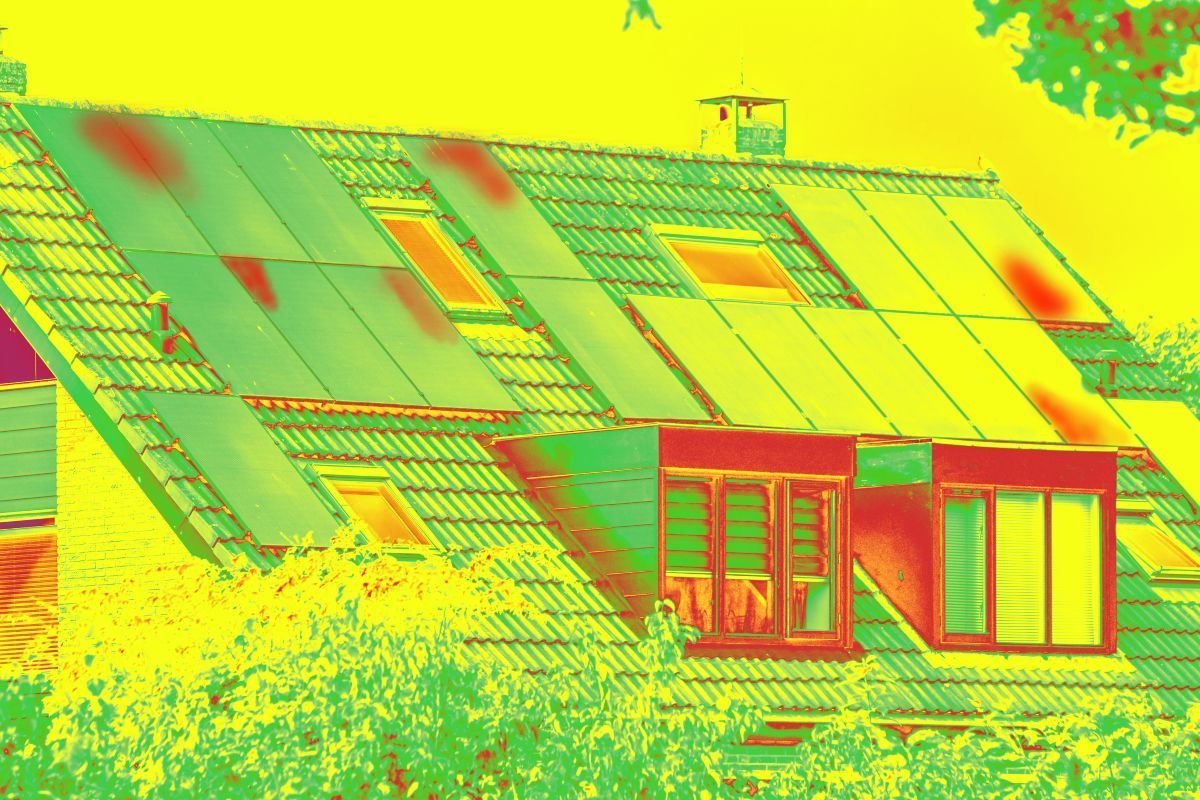How Infrared Roof Inspections Reveal Leaks You Can’t See
Roof leaks are among the most frustrating and costly issues for both homeowners and business owners in The Woodlands, TX. Traditional roof inspections often miss hidden moisture and subtle leaks that can cause significant damage over time. Fortunately, infrared roof inspections, also known as infrared thermography or thermal imaging, have revolutionized leak detection, offering a non-invasive, highly accurate method for uncovering hidden threats before they escalate.
Understanding Infrared Roof Inspections
Infrared roof inspections utilize advanced thermal imaging cameras to detect temperature differences across a roof’s surface. These differences often indicate the presence of trapped moisture, water intrusion, or insulation defects that are invisible to the naked eye.
When water infiltrates a roofing system, it saturates the insulation beneath the waterproof membrane. Because water retains heat longer than dry materials, these wet areas appear as "hot spots" on infrared images taken during the cooling period after sunset. This principle is supported by the U.S. Department of Energy, which notes that wet insulation conducts heat faster than dry insulation, making thermographic scans effective in detecting roof leaks.
How Thermal Imaging Technology Works
Thermal imaging technology provides a non-invasive and highly effective method for detecting hidden roof issues. According to the National Institute of Standards and Technology (NIST), infrared scanning has been widely used in roof moisture detection, with field studies confirming that areas identified as wet by infrared scanners also tested positive for moisture using other scientific instruments.
Here’s a comprehensive breakdown of how it functions:
Use of Thermal Imaging Cameras
Specialized infrared cameras systematically scan the roof surface, capturing detailed temperature data. These cameras are sensitive enough to detect subtle temperature differences, providing clear visual representations of thermal variations across the roof.
Identification of Thermal Signatures
Moisture trapped beneath roofing materials or within insulation produces a unique thermal signature due to differences in heat retention and dissipation. Wet areas typically appear warmer or cooler than surrounding dry sections, depending on environmental conditions, making them distinguishable in thermal images.
Advanced Data Analysis by Experts
Certified thermographers analyze these thermal images meticulously. Their expertise allows them to distinguish between regular thermal fluctuations, such as shading from equipment or normal heat retention, and irregularities indicative of leaks, moisture intrusion, or compromised insulation.
Pinpointing and Documenting Problem Areas
Once problem areas are identified, thermographers precisely mark their locations. This detailed documentation guides maintenance teams or contractors to efficiently address the exact sources of potential leaks or moisture damage.
Follow-up Recommendations
Thermography reports often include actionable recommendations, helping property owners or facility managers make informed decisions regarding repairs, maintenance, or preventive measures.
Why Leaks Go Undetected
Leaks can be elusive for several reasons:
- Water Migration: Once water penetrates the roof membrane, it can travel horizontally, making the source of the leak difficult to locate with traditional methods.
- Hidden Damage: Moisture can saturate insulation or structural components without showing visible signs until significant damage has occurred.
- Complex Roof Structures: Modern roofing systems often include multiple layers, making visual inspection alone insufficient.
These challenges underscore the importance of advanced diagnostic tools like infrared thermography in effective roof maintenance and leak detection.
Benefits of Infrared Roof Inspections
Infrared thermography offers several advantages over conventional inspection methods:
- Non-Destructive: No need to cut into the roof or disrupt your property-thermal imaging is completely non-invasive.
- Early Detection: Identifies problems before they become visible or cause major damage, saving thousands in potential repairs.
- Comprehensive Coverage: An entire roof can be scanned quickly, providing a complete assessment in a single session. Walkover inspections afford an average coverage rate of 10,000 to 20,000 square feet of roof per hour, allowing for efficient detection of anomalies.
- Targeted Repairs: By pinpointing the exact location of leaks or wet insulation, repairs can be focused only where needed, minimizing costs and material waste.
- Energy Efficiency: Wet insulation loses its thermal resistance, leading to increased heating and cooling costs. Infrared inspections help restore your roof’s energy performance.
- Warranty Compliance: Many roofing warranties require regular inspections and documentation. Infrared reports provide the evidence needed to maintain coverage.
The Science Behind Infrared Leak Detection
Infrared thermography is classified as a nondestructive evaluation (NDE) technique. It measures the radiant energy emitted from the roof surface, which correlates to temperature. Since wet areas cool more slowly than dry areas due to their higher thermal mass, they are easily distinguishable in thermal images taken at the right time—typically after sunset when the roof is cooling down.
Research has shown that infrared imaging is reasonably successful in detecting roof moisture, although further evaluation and improvement of the technique may be necessary due to factors like heavy roof construction types and varying weather conditions.
When Should You Schedule an Infrared Roof Inspection?
Infrared inspections are invaluable in several scenarios:
- After Severe Weather: Hail, heavy rain, or windstorms can damage roofing systems, leading to hidden leaks.
- Before Buying or Selling Property: Ensure the roof is in good condition and avoid unexpected repair costs.
- Routine Maintenance: Annual or biannual inspections help catch problems early and extend the lifespan of your roof.
- Warranty Compliance: Maintain documentation for warranty claims and insurance purposes.
What to Expect from a Professional Infrared Roof Inspection
A reputable roofing contractor, like Noble Roofing in The Woodlands, TX, will follow a systematic process:
- Site Preparation: The inspection is typically scheduled for late afternoon or evening to optimize thermal contrast.
- Thermal Imaging: The entire roof is scanned using high-resolution infrared cameras.
- Moisture Verification: Suspect areas are further tested using moisture meters or, if necessary, core sampling to confirm findings.
- Detailed Reporting: You receive a comprehensive report with thermal images, analysis, and recommendations for repair or replacement.
The Bottom Line: Protect Your Investment
Ignoring hidden leaks can lead to costly structural damage, mold growth, and energy loss. Infrared roof inspections offer a proactive solution, helping property owners in The Woodlands and surrounding areas safeguard their investments and maintain peace of mind.
Ready to Reveal What’s Hidden in Your Roof? Contact Noble Roofing Today!
If you’re a homeowner or business owner in The Woodlands, Shenandoah, Spring, Conroe, Cypress, Magnolia, Tomball, Humble, Montgomery, New Caney, or nearby communities, don’t wait for leaks to become disasters. Noble Roofing specializes in delivering accurate, non-invasive leak detection and expert repairs.
Protect your property, lower your energy bills, and extend your roof’s lifespan, contact us today for a professional roof inspection and experience the Noble Roofing difference.




